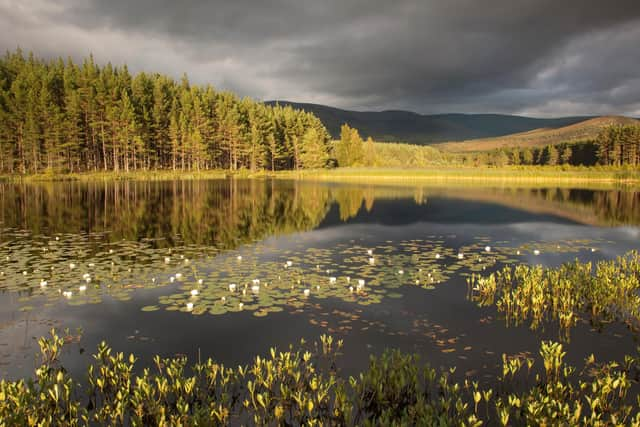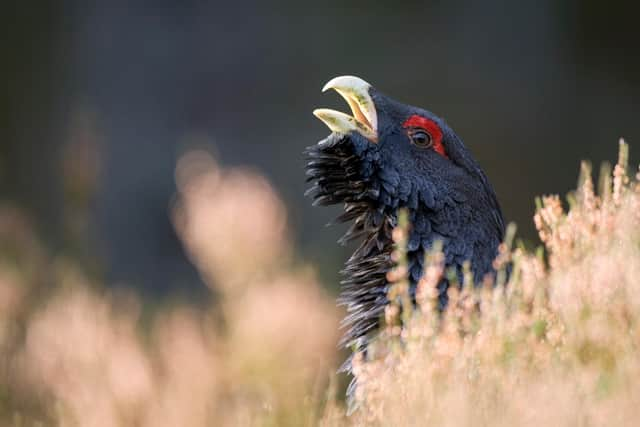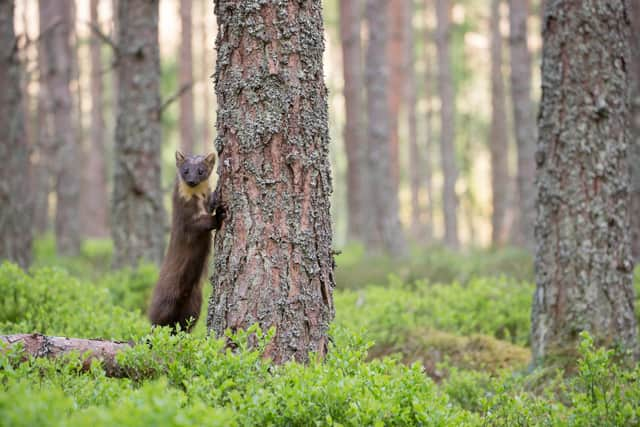Sustainable Scotland: How a 200-year vision is shaping wild landscapes in the Cairngorms
But that’s what a pioneering large-scale landscape restoration project in one of Scotland’s most physically and environmentally diverse regions is all about.
Cairngorms National Park is home to some of the country’s highest mountains, numerous rivers and lochs, wetlands, vast tracts of peat bogs and some of the last and largest remnants of ancient Caledonian woodland, as well as a whole host of wildlife species – including many that are rare or endangered.
Advertisement
Hide AdAdvertisement
Hide AdBut some of these natural wonders have reached a perilous state and are hanging by a thread.


Cairngorms Connect, a partnership between land managers in the area, was formed with a “bold and ambitious” 200-year vision that will see important habitats, native species and ecological processes enhanced across an area of the park three times the size of Glasgow.
The aim behind the initiative, the biggest landscape restoration project in the UK, is to tackle the twin climate and biodiversity crises through nature-based solutions “to make a better place for wildlife and people, on a vast scale, in a joined-up way”.
Measures include expanding indigenous woodland to double its current 13,000 hectares, rehabilitation of blanket and forest bogs and bringing back natural processes to river floodplains.


The partnership has today released a new report setting out what has been achieved since its official launch in 2018.
It shows that young native woodlands are spreading across open moorlands, peatlands and bogs are showing the signs of repair and early recovery and a range of people are connecting to nature and enjoying a wilder landscape in the making.
Key works to date include large-scale tree-planting, with 1,132 hectares of new woods created; dramatic reduction in deer densities; rewetting of peatlands; a special translocation scheme to improve the survival chances of the rare woodland twinflower; and the establishment of a special nursery to grow the native trees that will help restore natural forests and benefit the environment.
“The Cairngorms is an amazing place for nature,” said Sydney Henderson, communications and involvement manager for Cairngorms Connect.
Advertisement
Hide AdAdvertisement
Hide Ad

“The Cairngorms Connect habitats are home to over 5,000 species – 20 per cent are nationally rare or scarce and some are recorded nowhere else in Britain.
“We have a vital role to help people experience and value these wild places.
“A 200-year plan is daunting, but we’ve made a good start.
“It’s inspirational in scope and scale and ambition.
“The Cairngorms Connect project covers a vast area – 600 square kilometres – with mountains, rivers, forests and floodplains.
“People are also at the heart of the plans.
“For a long time we have seen ourselves as separate, not part of the environment, but we are all interconnected.
“It’s important to help people understand that we are part of the landscape and how we fit in.
“Traditional conservation plans have often focused on single species or habitats, but Cairngorms connect aims to improve the whole ecosystem on a landscape scale so all species can benefit.”
More than 7,000 native broadleaf seedlings have already been successfully germinated; 526 hectares of peatland habitats restored; and invasive alien conifers have been removed from more than 1,000 hectares of forest.
Improving the landscape will benefit local wildlife, including iconic and critically endangered species such as the Scottish wildcat, capercaillie and pine hoverfly – as well as ospreys, golden eagles, red squirrels, pine martens, snow buntings, lapwings, crested tits, dotterels and black grouse.
Advertisement
Hide AdAdvertisement
Hide AdMs Henderson added: “As forests expand and diversify they will clean air and help regulate the climate, and as peatlands function more effectively they will purify water and store huge amounts of carbon.
“Cairngorms Connect embraces our responsibility to deliver these ‘ecosystem services’ and our restoration projects will deliver real benefits to communities.
“We are delighted that our first progress update is so positive – and that is in part thanks to the wonderful communities who have volunteered their time to support us with our vital work.
Cairngorms Connect is a collaboration between Wildland, the conservation company set up by Danish billionaire Anders Holch Povlsen, wildlife charity RSPB Scotland and national agencies NatureScot and Forestry and Land Scotland, with funding from the Endangered Landscapes Programme.
Local arboriculturist Alban Thom, from Nethy Bridge, who has been working on forest restoration schemes for Cairngorms Connect, said: “Since I was young, I would ride my bike out through forests and into the mountains.
“I wondered why we had amazing forests and then places that trees didn’t grow.
“I didn’t know the reason but knew something wasn’t right, as you can see remnants of old forests, roots and stumps in the peat.
“Later, I learnt that it was our own doing and that the balance in nature had been lost – so now it is great to be involved in trying to bring the forests back.”
Advertisement
Hide AdAdvertisement
Hide AdThe Cairngorms Connect Tree Nursery, located in the heart of RSPB Scotland’s Abernethy National Nature Reserve, is helping to protect the threatened communities of montane woodland and other missing tree species across the region.
Local volunteers have played an important role in the efforts, contributing hundreds of hours of their time and helping raise thousands of new trees, including species of dwarf and downy birch, aspen, alder, downy and eared willow.
It has also provided an important connection point for the local community.
Ms Henderson added: “The tree nursery in particular has played a really important role as a place for people to come together – especially during Covid, where it was a safe outdoors space for people to get out into nature and help grow the forests of the future.”
Restructuring Scots pine plantations creates a more natural forest, and in turn a healthier and more climate resilient habitat for people and wildlife.
More than 1,089 hectares of Scots pine plantation and 1,132 hectares of other tree-planting has been completed, with non-native conifers removed from 1,175 hectares.
Peatlands are an essential part of the fight against climate change, providing natural storage for climate-warming carbon when in healthy condition.
They also provide homes for many rare and threatened species of plants and animals.
Advertisement
Hide AdAdvertisement
Hide AdWork is already well under way to restore the habitat, with support from the Cairngorms National Park Authority Peatland Action team.
Measures include re-wetting bogs, restoring water levels and re-profiling eroded peat channels.
A message from the Editor:
Thank you for reading this article. We’re more reliant on your support than ever as the shift in consumer habits brought about by coronavirus impacts our advertisers.
If you haven’t already, please consider supporting our trusted, fact-checked journalism by taking out a digital subscription.
Comments
Want to join the conversation? Please or to comment on this article.
